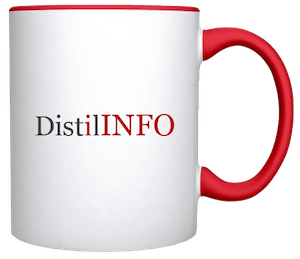Patient-centered medical homes serve as key models for primary care and requires cooperation between patients, providers, and community stakeholders.
The patient-centered medical home may just be the model for primary care of the future, especially as healthcare payments are increasingly tied to value and providers focus on keeping patients engaged in their wellness care.
Contrary to its title, the patient-centered medical home (PCMH) is not a place; instead, it’s an organizing structure that calls on primary care, specialty, and community health providers to work together to coordinate healthcare to drive patient wellness.
In short, the PCMH is almost exactly how primary care should look in a value-based healthcare world.
Want to publish your own articles on DistilINFO Publications?
Send us an email, we will get in touch with you.
“The patient-centered medical home is a key foundation to how we’re building our programs and looking at how our programs are going to continue our move towards value-based reimbursement,” according to Amy McKenzie, MD, MBA, of Blue Cross Blue Shield of Michigan.
“PCMHs have been a foundation of how our practices do their work and how medical homes interact with their specialists, but then also feed into things like our organized systems of care, which is how our patient-centered medical home practices are then working within the community.”
And she should know. BCBSM, where McKenzie serves as the medical director, has an expansive patient-centered medical home model. Since implementing the program in 2008, BCBSM has designated nearly 4,700 physicians as a part of a patient-centered medical home.
The program, which represents the largest statewide PCMH in the nation, has higher rates of preventive care and lower rates of emergency department utilization than other healthcare delivery models. As a result, it boasts $626 million in prevented claims costs in just a nine-year window.
But that success didn’t come overnight. BCBSM has worked to refine its program to work best for its provider and patient participants.
The secret to its success? Ensuring everyone involved in the patient-centered medical home knows all of their responsibilities.
Foremost, providers in a patient-centered medical home model need to focus on patient-centricity and team-based care.
“The characteristics of high performing practices are really around engaging their patients in a very different way than was done historically,” McKenzie said in an interview with PatientEngagementHIT.com. “Building a team-based model that’s very patient-centered is important. In years past, patients may have come in, sought care for some sort of condition, and then gone back out and the doctor wouldn’t have kept an ongoing tracking mechanism knowing when the patient needed care.”
But care is much more proactive now, McKenzie acknowledged, and high-performing primary care providers in a patient-centered medical home keep logs and registries of their patients to understand who needs what type of care. This ultimately works to keep patients out of higher-cost settings like the emergency department.
“The primary care physician is serving as the hub or the coach or the quarterback who runs all those processes of care to make sure that patient care is coordinated,” McKenzie said. “They are ensuring care is being done with full line of sight to other providers interacting with patient care.”
Driving patient engagement goes beyond those regular care appointments, however. Provider offices need to make themselves available for patient care access nearly 24/7, or work with other care facilities to ensure patients have constant support.
“We know that many times healthcare doesn’t just happen in those hours of nine to five, right?” McKenzie remarked. “Without having somebody to contact for medical expertise, somebody that has some clinical knowledge, we know that that can drive patients into the emergency room.”
READ MORE: How Do Patient-Centered Medical Homes Support Patient Engagement?
“We want to make sure that all of the patient-centered medical homes are providing that access to answer any health questions or needs patients have,” McKenzie added.
BCBSM’s approach has so far been effective. As noted above, the organization has seen lower emergency department utilization rates, thanks in part to the coordinated care and access to care from medical providers.
Of course, those results don’t come if the patient is not there to play ball, so to speak. Much of the success of any modern healthcare model, especially those that underscore value, is getting the patient to engage in preventive care and allow their care to be managed.
This all comes to light in the patient-provider agreement that BCBSM patient-centered medical home providers show their patients. While on one end the agreement outlines the different roles the PCMH will play, it also discusses what the model is about and the patient’s role in everything.
“Typically it’s just that the patient is following up on her care, she’s interacting and engaging with that physician around that decision-making process,” McKenzie said. “It outlines how to be an activated patient, which mean you’re following through with the recommendations that are being made. Or if you feel like you can’t follow through, that you’re sharing why that is or having that dialog around what your concerns are with your position.”
At the core of that agreement is patient health literacy and healthcare navigation. Organizations need to make sure patients have the expertise to understand the healthcare system and access care at the right place at the right time, McKenzie said.
And for that, many PCMHs enlist the help of non-clinician medical professionals, like social workers or case managers.
“They’ve taken that next step around not just care coordinating, but also having care teams that are built to be able to help patients understand care coordination better as well as get people linked to services,” McKenzie explained.
Of course, there may be times where the patient fully engages in her care and yet the provider nonetheless faces challenges managing it. A patient may get her flu shot, for example, but instead of visiting a part of the PCMH, goes to a retail clinic due to convenience.
This could set up a whole set of logistical interoperability issues, McKenzie said, if it weren’t for health information exchange. Providers that are a part of the BCBSM patient-centered medical homes have access to Michigan’s statewide health information exchange (HIE) that allows them to track data about the patient and manage where there may or may not be care gaps.
“If a patient has a flu shot, we have a claim for that,” McKenzie stated. “We populate and provide that information back to our physician practices into our physician organizations where that information is aggregated.”
And for their part, BCBSM has twelve domains that characterize successful patient-centered medical homes. Being clear about these expectations has been helpful in guiding providers in delivering the right kind of care, but being flexible about how providers go about it has been essential, according to McKenzie.
Take the use of technology, for example. BCBSM hosts just under 5,000 primary care providers practicing in over 1,700 medical practices in their PCMH models. That creates a lot of diversity.
“You can imagine that, while some have technology and make use of technology, others are still on paper,” McKenzie said. “The technology is definitely helpful. It’s helpful for the practitioner because it can save them time and the registry usage can help pull through reports of a patient who might be missing a service so that practitioner’s office can then outreach.”
“But we also know of offices that are still on paper that maintain a tracking system,” she said.
BCBSM does not necessarily have a requirement for different providers to be using certain healthcare technologies. While it is undeniable that using the EHR will make it easier to participate in a patient-centered medical home, it has always been important to BCBSM to be flexible to different situations.
How organizations design their team-based care is another key area where BCBSM works to provide flexibility.
“Care teams look can look very different based upon what area they’re practicing in,” McKenzie noted. “We have patient centered medical homes across the entire state in all 81 of our counties that have PCPs. It may be that what I need in my practice is a pharmacist because that helps me with medication management. But another patient-centered medical home may benefit more from having a social worker depending on their patient population.”
McKenzie and her team at BCBSM have set up their program to support providers in care management, but also to give them the flexibility that recognizes that not all populations look the same, so not all care management programs will, either.
At the end of the day, this approach has been successful, McKenzie reflected. The BCBSM patient-centered medical homes have seen significant reductions in both emergency department visits that are primary care sensitive – meaning they stemmed from an issue that could have been mitigated in primary care – as well as ambulatory care.
“Those are big cost drivers and it’s consistent with the savings that we have seen across our patient-centered medical home,” McKenzie concluded. “As we move towards more shared savings with providers and different payment models, it’s really important that those communities of caregivers are brought together in a way that they’re able to coordinate care and managed care more efficiently.”
Date: october 04, 2019
Source: Patient Engagement Hit







